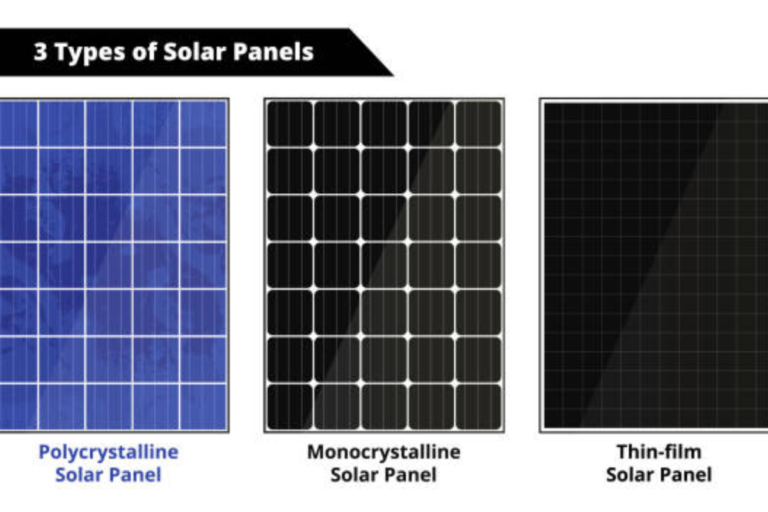Introduction: What Are Monocrystalline Solar Panels?
Monocrystalline solar panels are a type of solar panel made from silicon. These panels are known for their high efficiency in converting sunlight into electricity. They are created from a single, continuous crystal structure, which is why they are called “monocrystalline.” These panels are often chosen for their ability to generate more power with less space. People use monocrystalline solar panels for homes, businesses, and large solar projects. They are popular because of their high performance and long lifespan.
In the following sections, we will explore the benefits of monocrystalline solar panels, how they work, and why they are the best option for sustainable energy solutions.
Why Monocrystalline Solar Panels Are the Most Efficient Choice?
Monocrystalline solar panels are considered the most efficient choice because of their high power output. They are made from a single crystal structure, which allows electrons to flow more freely, making them more effective at converting sunlight into electricity. This means monocrystalline solar panels can produce more energy in less space compared to other types of solar panels, such as polycrystalline ones.
These panels typically have efficiency rates ranging from 15% to 20%, which is higher than most other solar panel types. This makes monocrystalline solar panels ideal for those with limited space who still want to generate significant amounts of energy. Additionally, they work better in low-light conditions, giving them an edge over other panels during cloudy days or in shaded areas.
Because of their efficiency, monocrystalline solar panels are a great choice for anyone looking for the best performance and long-term energy savings.
The Benefits of Using Monocrystalline Solar Panels for Your Home or Business
Monocrystalline solar panels offer several advantages for both homes and businesses. One of the main benefits is their high efficiency. These panels produce more energy with less space, making them perfect for areas with limited roof space. Whether it’s a home or a business, installing monocrystalline solar panels means you can generate significant power without taking up too much room.
Another benefit is their durability. Monocrystalline solar panels are designed to last for many years, often with warranties of 25 years or more. This makes them a long-term investment that can save money on energy bills for decades. The panels also perform better in low-light conditions, ensuring reliable energy production even on cloudy days or in shaded spots.
For businesses, monocrystalline solar panels can also help reduce energy costs and improve sustainability efforts. They are a great way to lower electricity bills while contributing to a greener environment. For homeowners, these panels add value to the property and reduce reliance on traditional energy sources, making them an excellent choice for a cleaner, more energy-efficient future.
How Monocrystalline Solar Panels Compare to Other Types of Solar Panels?
Monocrystalline solar panels stand out when compared to other types, such as polycrystalline and thin-film solar panels. One of the main differences is efficiency. Monocrystalline solar panels are the most efficient type, with energy conversion rates between 15% and 20%. This means they can generate more electricity from the same amount of sunlight, making them ideal for those with limited space.
In comparison, polycrystalline solar panels are less efficient, usually around 13% to 16%. While they are more affordable, they require more space to produce the same amount of energy as monocrystalline solar panels. Thin-film panels are the least efficient, with rates typically below 15%, and they need even more space to match the output of monocrystalline solar panels.
When it comes to durability, monocrystalline solar panels also have the edge. They tend to have longer lifespans and perform better in low-light conditions than both polycrystalline and thin-film panels. For those seeking a long-term investment with higher energy output, monocrystalline solar panels are clearly the better choice.
Cost of Monocrystalline Solar Panels: Is It Worth the Investment?
The cost of monocrystalline solar panels can be higher compared to other types like polycrystalline or thin-film panels. On average, they are more expensive due to their higher efficiency and longer lifespan. However, the higher upfront cost is often justified by the long-term benefits. Since monocrystalline solar panels produce more energy in less space, you need fewer panels to meet your energy needs, which can save money in the long run.
While the initial investment might be higher, monocrystalline solar panels can help you reduce energy bills significantly. Over time, they pay for themselves through lower electricity costs. Moreover, their durability means you won’t need to replace them as often as other panels, adding more value over time.
For homeowners and businesses looking for reliable and efficient energy solutions, monocrystalline solar panels are a worthwhile investment. Their efficiency and longevity make them a smart choice, ensuring that you get the most out of your solar power system in the years to come.
Conclusion: Why Monocrystalline Solar Panels Are the Future of Renewable Energy?
Monocrystalline solar panels are the future of renewable energy because of their high efficiency, durability, and long-term cost savings. As more people and businesses seek sustainable energy solutions, monocrystalline solar panels offer a reliable and powerful option for generating clean energy. Their ability to produce more power in less space makes them ideal for various settings, from residential homes to large commercial projects.
The higher initial cost of monocrystalline solar panels is outweighed by their long lifespan and ability to deliver greater energy output. As the world continues to shift toward renewable energy, these panels will play a crucial role in meeting global energy needs in an environmentally friendly way. Choosing monocrystalline solar panels means investing in a cleaner, more efficient future for both your energy needs and the planet.
Thank you for visiting our Blog! For more engaging content, please check out the related category.
Maxeon Solar Panels: The Ultimate Guide to Efficiency, Durability, and Cost-Effectiveness
